By Paul Wiseman
This sequence from the classic movie Casablanca sums up the quality of life in the Permian Basin. Claude Rains played Captain Renault and Humphrey Bogart played club owner Rick Blaine.
Captain Renault: Ricky, what in Heaven’s name brought you to Casablanca?
Rick: My health. I came to Casablanca for the waters.
Capt. Renault: The waters? What waters? We’re in the desert.
Rick: I was misinformed.
In the Permian Basin, people mainly come for the jobs because, as in Casablanca, there are no waters. In a downturn, newcomers can be misinformed about even that. But even in the desert, where the word “water” is usually preceded by the word “produced,” residents still look for a certain quality of life.
Area leaders work against nature and sometimes the state capitol in wresting a better life than first meets the eye. Safe bike paths, city part upgrades, road growth, and business climate improvement are all on the agenda for chambers of commerce and other public organizations.
MOTRAN Alliance is the 501 (c) 6 nonprofit created to improve transportation infrastructure, not only in Midland/Odessa as the name implies, but throughout the Permian Basin. The organization’s President, James Beauchamp, keeps up with trends, traffic counts, and much more, helping Austin leadership understand why so few people need so many roads.
“Every day, you’ve got to tell the story and communicate these issues and a lot of days you’ve got to do it over and over and over again, but eventually it clicks in,” he said.
For years Basin truck traffic was underestimated, Beauchamp added, because TXDOT had one weigh-in-motion counter on I-10 and one on I-20—one of which did not work at all and the other of which was mis-calibrated so it grossly underestimated the truck counts. Getting those devices updated alone revolutionized TXDOT’s understanding of the area’s traffic issues. They found 106,000 daily truck trips that they had previously missed. The new numbers have led TxDOT to funnel more money to I-20 projects.
As is implied by the “TRAN” in its name, MOTRAN spends a lot of time working on road and highway projects to relieve congestion and improve safety. Beauchamp noted that planning new or extended roads can be challenging because of the plethora of other right-of-ways, such as pipelines, powerlines—and oil wells.
“During the planning process, we had to reset several times because of development that changed in the oil and gas fields. There were times where an operator said ‘Yes, you can take it through here,’ and then a couple of days later there’s a pumpjack there. We’re like, ‘How’d this happen?’”
In the past—before there were working truck counters—getting funding for road expansion was the biggest challenge for MOTRAN. But the recently passed Federal infrastructure bill will give Austin an extra $1 billion, and that, along with an extra $500 million in highway funds from severance taxes due to increased production, will give the state some budget breathing room. Says Beauchamp, “Their budget’s going up, and they’re going to need to invest some of that out here.”
Some of the money will be invested in the long-discussed updating of I-20 through Midland and Odessa. The roadway will be expanded to six lanes from its current four, the access roads will become bidirectional, and at interchanges the interstate will go over the top. That last project is geared at reducing the number of trucks slamming into overpasses at highway speeds, which has been at epidemic rates the last 10 years or so. All this is expected to take 6-8 years to complete—and for Beauchamp it’s a mixed blessing.
The changes are desperately needed, but, in the meantime, traffic will get worse before it gets better.
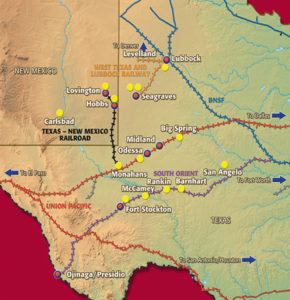 “As we’re getting into that interstate project over the next 6-8 years, it’s a tremendous headache—and there is nowhere else for that traffic to move, because you don’t have fully functional freeways and loops around these communities,” he said, adding, “We’ve got to finish these loops—that’s imperative.”
“As we’re getting into that interstate project over the next 6-8 years, it’s a tremendous headache—and there is nowhere else for that traffic to move, because you don’t have fully functional freeways and loops around these communities,” he said, adding, “We’ve got to finish these loops—that’s imperative.”
At the mention of loops, 250 and 338 pop into the mind, but Beauchamp adds the need for a loop around Pecos as a high priority. This would relieve backups at U.S. 285 and I-20, saving truckers up to 45 minutes a day coming and going, along with improving safety there. “We have to stop mixing commercial and normal traffic, for safety and efficiency,” he declared.
His push for efficiency extends throughout the region.
“We’ve got to make our transportation system efficient. We don’t have enough people to do what needs to be done out here. We have 30,000 commuting workers that have to come from other places. So if you’re wasting an hour of your time a day—whether that’s 40 minutes over at U.S. 285 and I-20 in Pecos, or whether it’s wasting 30 minutes a day getting stuck in multiple lights at Midland Drive and Andrews Highway—if we can free up an hour in somebody’s day, that’s productivity. And, it’s money for companies. And frankly, it’s quality of life.”
Another road that piques Beauchamp’s interest is the information highway. “From our perspective, there’s no difference between a road, a highway, a pipeline, or a fiber line. It’s about moving things in and out of here,” he said.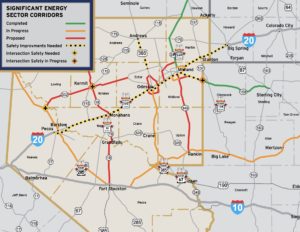
Citing the large number of workers who upload data from home at the end of the day along with a growing network of remote monitoring for field locations, he noted that the data infrastructure was also overloaded. MOTRAN was instrumental in bringing in new providers and new processing facilities to make work-from-home more efficient.
Former mayor and current Midland Chamber of Commerce President Bobby Burns has seen more than his share of booms and busts across his decades of public service. So the last two years, while somewhat accelerated in their ups and downs, were not unique to him.
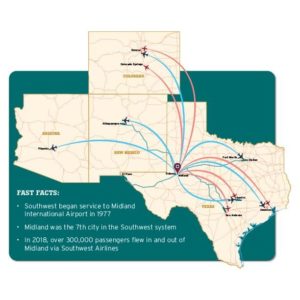 In fact, “In think in some ways, we’ve been un-impacted by it [COVID-19] to a large degree. Our main industry, the oil industry, has stayed strong,” he said, adding that the nation’s energy needs are as strong as ever. “The Permian Basin is still one of the most important producing areas in the world.”
In fact, “In think in some ways, we’ve been un-impacted by it [COVID-19] to a large degree. Our main industry, the oil industry, has stayed strong,” he said, adding that the nation’s energy needs are as strong as ever. “The Permian Basin is still one of the most important producing areas in the world.”
During the downturn of 2016-18 the saying in Midland/Odessa was that the Permian was the “Last Basin Standing,” and that has been the case again over the last two years. In Burns’s words, “Midland fuels America.”
Most people consider the Chamber’s purpose as being to promote business. However, Burns points out, anyone coming to the Permian to work also needs to know there’s “quality of place” for non-work activities—and under his watch the Chamber has indeed worked in those areas.
Redesigning Hogan Park is high on the agenda for the Chamber, the City of Midland, and the Midland Development Corporation, as Mayor Patrick Payton has discussed at length. The plan is to create bike and jogging paths and to improve soccer and softball complexes onsite. He noted that those fields at Hogan and elsewhere bring in a long list of tournaments throughout the year due to the area’s sunny weather—which bring a larger number of visitors to the community.
“I’ve been involved with an effort to build a bike path/jogging path that connects Midland to Odessa,” he said. The proposed route would start by connecting the Scharbauer Sports Complex to UTPB’s Center for Energy and Economic Diversification (CEED) at the intersection of SH 191 and FM 1788. Eventually the path would extend all the way to UTPB’s main campus in Odessa. A cycling tragedy on SH 158 in April of 2018, in which two cyclists were killed and another injured by a drunk driver, pushed area cycling enthusiasts to ask for safe bike paths, Burns said.
“Things like that, that allow Midlanders to get out and enjoy the good weather we have 10 or 11 months out of the year,” are important quality of place opportunities, in his view. Support for the path has come from both the cities of both Odessa and Midland as well as from Ector and Midland counties and other organizations.
Adding to existing museums, arts centers, and the AA Midland Rockhounds, Burns feels Midland is already well equipped for a city of 160,000. The issue is that the area can’t get behind on the quality of life curve compared to other cities.
More retail, restaurants, and other businesses are already setting up shop in the area.
Diversification?
Since about 1927 it’s been true that anyone in town selling groceries, hamburgers, insurance, or haircuts was, at least indirectly, in the oil business because they were relying on it for their livelihood. So for several years in the ’80s and ’90s civic leaders in Midland Development Corporation and others spent much effort and money looking to diversify. Jacobs Electronics downtown and XCOR Aerospace at the airport were two examples. Both of them have been gone for years.
While he would be happy to see diversification, Burns cites hiring and payroll issues as reasons he no longer sees a reason to actively pursue other industries. “It’s awfully hard to keep those employees (in other businesses) because oil and gas can pay more.” That said, the city is still looking for aerospace industries to populate the Air and Space Port, where they see “great potential.”
Midland Development Corporation
MDC’s Executive Director, Sara Harris, says her organization balances its incentive money between expansion for existing business and offers to companies coming in from outside. In that mix, bringing business to the spaceport is among their areas of focus. The corporation uses revenue from a quarter percent sales tax to fund business growth, infrastructure improvement, workforce development, and quality-of-life efforts, including parks and recreation, as allowed by state law.
“We work at a balance to support both,” she said. “One of the primary ways we seek to support existing businesses is through workforce development.” She cited partnerships between MDC and educational entities such as Midland College and the University of Texas, Permian Basin (UTPB) as examples of workforce development. Business and information technology training, health science, petroleum industry, and other programs receive MDC funding, functioning as “workforce feeder programs for existing businesses.”
The CEED campus will also start a business incubator program with help from MDC.
Outside the Permian, MDC focuses on technically focused firms like engineering, IT, oil and gas support, distribution, and warehousing—and aerospace.
She said the spaceport is getting more second looks from aerospace companies as they find increasing environmental pushback in communities where they currently operate. Emissions concerns top that list, an issue that, she pointed out, is not high on the list for people in the Permian Basin. And that industry’s need for STEM-trained workers overlaps well with the needs of the oil industry. In 2021, she said, $14.5 billion in private money was invested in aerospace development.
MDC has also invested funding in infrastructure, dedicating 30 percent of their revenue toward working with both the City of Midland and TxDOT to develop new and expanded roadway infrastructure. These are identified as “Avenues and corridors of new development and stress in the city that need to respond to growth.” MDC usually contributes about 10 percent of a project’s cost, “getting them done years faster than they would have been done otherwise.”
Loop 250 interchange improvements are on that list, along with the extension of Todd Road to north of Loop 250 in northeast Midland, to provide access to the proposed building of 2,000 home there.
MDC also contributes to quality of life issues, realizing that “in the past Midland has unfortunately been kind of seen as a tour of duty as opposed to a destination.” So a small part of their revenue is used for what Harris called strategic contributions to make the city more inviting to new arrivals in the hope they will want to stay.
The aforementioned $55 million redevelopment of Hogan Park, slated to begin later in 2022, is one of those. MDC has also “invested in real estate downtown for redevelopment prospects.” They bought the city block bordered by Big Spring, Illinois, Colorado, and Texas Streets. It adjoins Centennial Park as well.
Waters or no, many organizations up and down I-20 are dreaming, planning, buying, and developing ways to make the area more inviting. As one of the leading providers of energy and quality of life to the rest of the world, it seems right that locals should reap some quality of life for themselves.










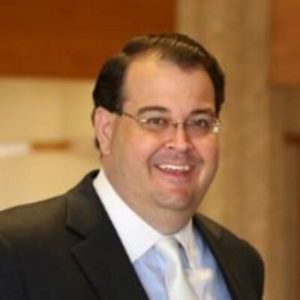
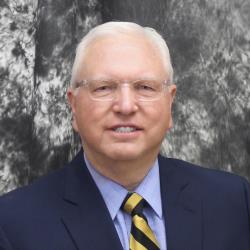
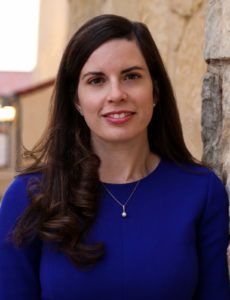
IF the electric generating industry in Texas would join with oil and gas producers, together they could turn produced water from the oil and gas wells directly into
liquified energy that when ‘burned’ to drive turbines generating many thousands of
Gigawatts of AC electricity to power homes, cities, and further oil and gas production,
the by product would be clear fresh water by the billions of gallons. That could be
released down the dry arroyos to flow to the Rio Grand and ‘liven up’ west Texas.
The increased electric power would enable more manufacturing and DC current and
voltage would turn the produced water into energy in a closed loop, doing away with
saltwater disposal wells everywhere……..and restoring the USA/Texas to a NET
ENERGY EXPORTER…..not beholden to Arab states or Russia.